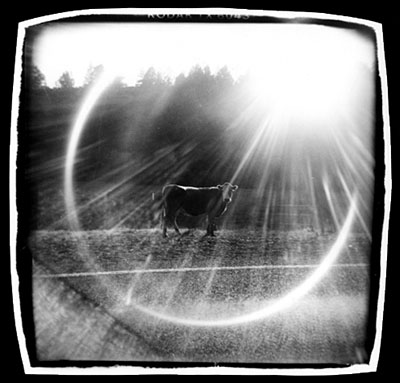Manufactured in China as cheap plastic knock-offs of conventional SLRs, Holga and Diana cameras are defiantly primitive, explains Seattle photographer Michelle Bates. Most models have next to no adjustments. The camera doesnt do anything for you. With a plastic lens, single shutter speed, two F-stops, and minimal focus range, an entry-level Holga ($28) forces the photographer to do things a little bit backwards, she adds. She discovered the Holga in 1991, as other artists began experimenting with these low-tech cameras, yielding grainy often distorted imagesthe opposite of megapixel precision. Her work, and that of 49 others (including Sylvia Plachy and Nancy Rexroth), is featured in the newly revised second edition of her Plastic Cameras: Toying With Creativity (Focal Press, $29.95). Its less a monograph than a how-to manual. For instance: How to take an underwater photo? Put your Holga in a zip-lock sandwich bag. Theyre not precious, so you can do stuff like that, says Bates. And its no surprise that the growing trendiness of the Holganow sold at Urban Outfitters!has coincided with the rise of digital photography. Theres tons of mixing going on with analog and digital, Bates explains. Once the Internet came along, it started exploding. No matter what blurry image emerges from the crude, flimsy device, theres always Photoshop to accentuate the imperfections. (See more such photos at the ongoing Amy Blakemore exhibit at SAM.) BRIAN MILLER
Sat., Nov. 13, 2 p.m., 2010




